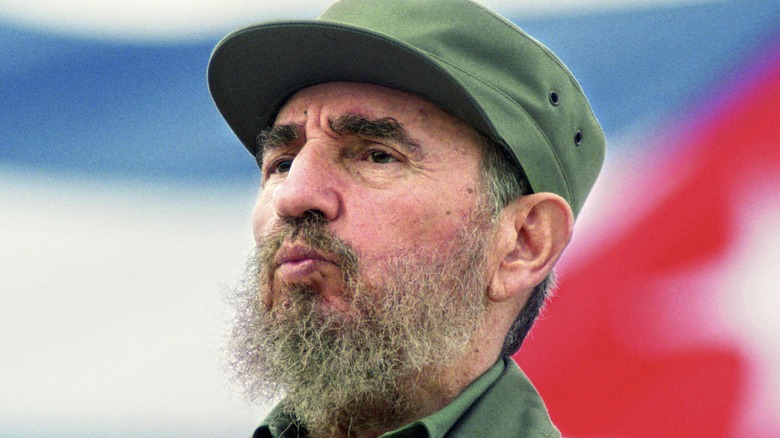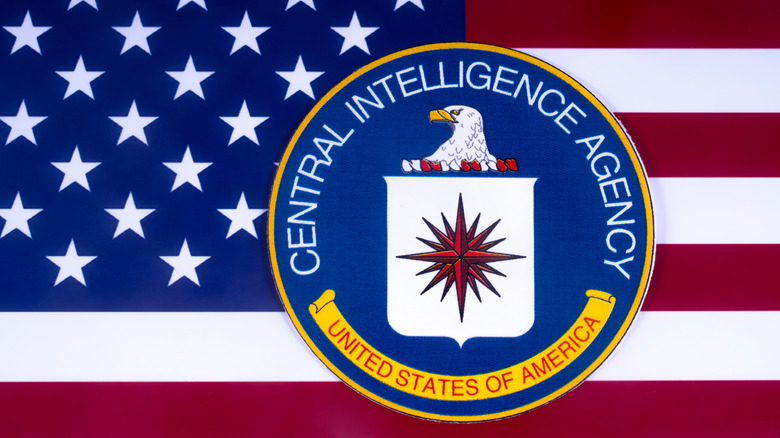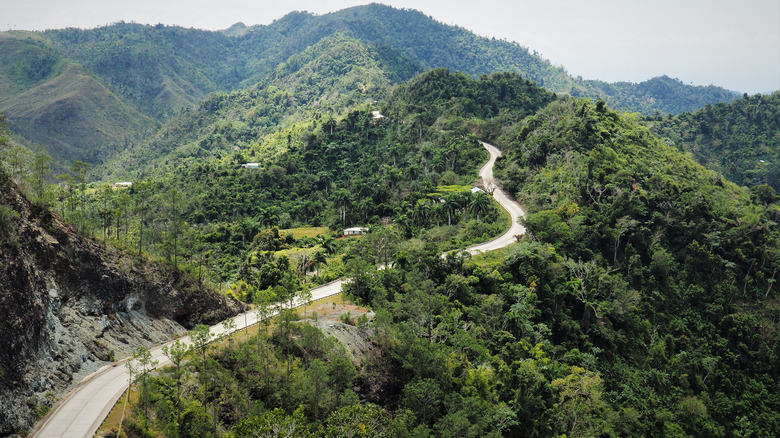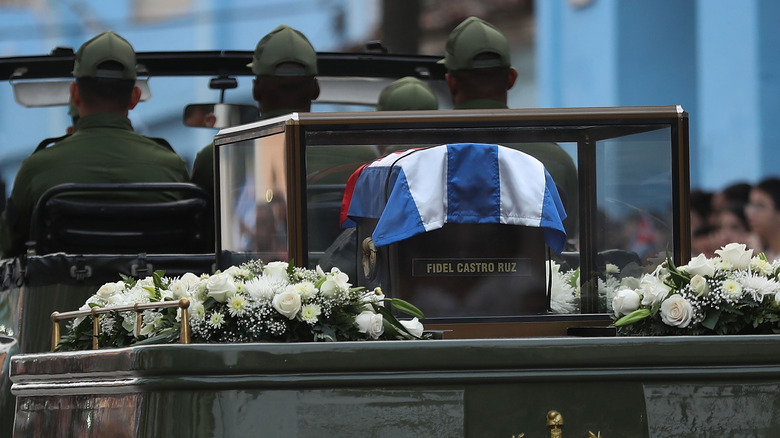The Dark Secret About Fidel Castro The US Government Tried To Hide
The relationship between the United States and Cuba is rocky, to say the least. According to the Council on Foreign Relations, much of the turbulence between the two countries stems from the actions of Fidel Castro, the former Prime Minister and President of Cuba. In particular, the conflict was due to Castro's establishment of a socialist, Soviet Union-allied state in 1959 following the takeover of Fulgencio Batista's U.S.-backed regime in Havana.
Castro, a Marxist–Leninist, had a starkly different vision for Cuba than the American dream centered around capitalism, and this divide would fuel a violent rift between the two nations that continues to this day. In the eyes of America, Castro was a threat to global stability, a threat that needed to be extinguished. Yet others have noted the corruption of Batista's rule, which has been likened to a dictatorship, per The Irish Times. As always, the history is much more complicated than a simple battle between good and evil.
According to JSTOR Daily, historian Louis A. Pérez described the United States' disdain for Castro in a peer-reviewed paper he wrote titled, "Fear and Loathing of Fidel Castro: Sources of US Policy Toward Cuba," as deeply rooted in a loss of power. He described that loss of power as a "trauma."
Pérez wrote, "That Castro embraced communism was insufficient to guarantee U.S. ire. That it happened in a country where the United States had historically imposed its will and gotten its way deepened the insult of the injury."
The CIA tried to take Castro's life many times
As reported by Best Life, America ultimately took matters to the extreme when it tasked the CIA with assassinating the revolutionary Cuban leader. The agency concocted many different secret schemes to take out Castro, but one of the most strange and diabolical plans would have used an exploding seashell (triggered by touch) in his favorite scuba diving spot. Although the plot never came to fruition, it remains a glaring example of the tensions between America and Cuba amid the Cold War.
The exploding seashell might be the wildest plot, but there were many others that offered competition in this category. In fact, it's not even the first time the CIA tried to use a covert explosive to take out the former Cuban leader. As reported by NBC News, the American intelligence agency once tried to kill Castro with an exploding cigar laced with botulinum toxin, one of the most poisonous substances in the world. Ultimately, the plan failed: after they were delivered to an unidentified person, the whereabouts of the cigars disappeared into history.
The CIA's other plots to kill Castro were many, and include a contaminated scuba diving suit, two hired mobsters, and a femme fatale who was coaxed into taking her lover's life. The head of the Cuban secret service, Fabian Escalante, said between the CIA and Cuban exiles, there were 634 attempts on the dictator's life, per The Guardian.
The US government wanted Castro dead for 40 years
The plots to assassinate Fidel Castro started right after the 1959 revolution, during the presidency of Dwight Eisenhower, and continued to as recently as the year 2000, per The Guardian, who reported that often the administrations didn't even know about the CIA's plots. However, according to Pérez's "Fear and Loathing of Fidel Castro" paper, the U.S. perpetually "pursued a policy to remove Fidel Castro from power," regardless of the politics of the various administrations — whether Democrats or Republicans — getting rid of Fidel Castro had always been a goal.
Wayne Smith, the former head of the U.S. interests section in Havana, told The Guardian, "Cuba seems to have the same effect on American administrations that a full moon has on a werewolf. We may not sprout hair and howl but we behave in the same way."
That rabid need for revenge might be because Pérez described the United States' relationship to Cuba prior to Castro's take over was that it was the "background for honeymoons, a playground for vacations, a brothel, a casino, a cabaret, a good liberty port — a place for flings, sprees, and binges."
Prior to that, Americans have had an ongoing interest in Cuba since before the Civil War, when southerners hoped to use the country to expand slavery. Then when Cuba gained its independence from Spain, the U.S. often intervened as needed, helping out financially or sending diplomats or military to the island for years at a time, per JSTOR Daily. The U.S. was deeply invested.
Fidel Castro died at 90 of natural causes
The ability of Castro and his regime to take control of their small island nation — a nation that the powerful U.S. considered its own playground — and shape it as the antithesis of American ideals was not something the U.S. government could stomach. Yet their many failed assassination attempts just added to the nation's humiliation at being bested by Fidel Castro.
According to CNN, Castro would tell interviewers "If surviving assassination attempts were an Olympic event, I would win the gold medal."
Castro eventually died in 2016 at the age of 90 from natural causes. Prior to his 90th birthday, Castro mused on what he called his fate, saying, "Soon I will turn 90 years old, never would such a thing have occurred to me and it's not the outcome of any effort; it was fate's whim. Soon I will be like everyone else. To all of us comes our turn."



